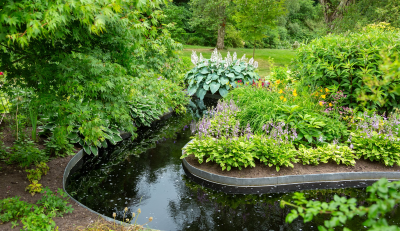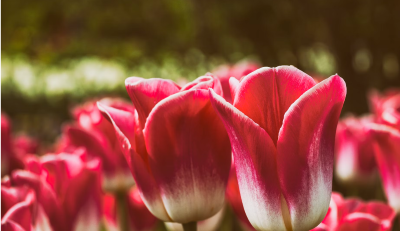When Do Morning Glories Bloom? Planting, Growing, and Care Tips
Introduction
If you’re a gardening enthusiast like me, you’ve probably come across the beautiful and vibrant morning glories, known for their stunning trumpet-shaped flowers and their ability to climb and spread. One of the most fascinating aspects of these plants is their bloom cycle—how and when morning glories bloom can sometimes seem almost magical. In this post, I’ll dive into everything you need to know about growing morning glories, when they bloom, and how you can care for them to ensure they thrive in your garden.
What Are Morning Glories?
Morning glories are part of the Convolvulaceae family, well-loved for their bright and cheerful flowers. These usually open early in the morning and close in the afternoon. Their name “morning glory” is inspired by this daily floral rhythm. These flowers come in a variety of stunning colors, including blue, purple, pink, red, and white, and their vines can grow up to 10-15 feet in length. This length makes them perfect for trellises, fences, and arbors. The most common types of morning glories include Ipomoea tricolor, Ipomoea purpurea, and the moonflower (Ipomoea alba), which, interestingly, blooms at night!

But the question I get asked most often is, “When do morning glories bloom?” Let’s explore that.
When Do Morning Glories Bloom?
Morning glories are summer bloomers, and the time when morning glories bloom depends on several factors, including the climate and how well they are cared for. Typically, morning glories begin blooming about 2 to 3 months after planting. They continue to bloom well into the fall, sometimes as late as October or even early November in warmer regions.
The flowers typically bloom early in the morning, just as the sun rises, and start to close as the day heats up. This beautiful cycle repeats daily during their bloom season. If you’re wondering why morning glories bloom in the morning and not throughout the day, it’s because their flowers are sensitive to light and temperature changes. In cool, overcast weather, they may even stay open all day.
To make sure your morning glories bloom beautifully, you’ll need to give them the right growing conditions, which I’ll cover in the next sections.
Different Kinds of Morning Glories
While morning glories are known for their bright blooms and climbing vines, there are different varieties you can choose from depending on the look and feel you want in your garden.
- Heavenly Blue Morning Glory (Ipomoea tricolor): This is one of the most popular varieties, known for its large, sky-blue flowers with a white throat. It’s a classic choice for many gardeners.
- Scarlet O’Hara Morning Glory (Ipomoea nil): With deep red flowers, this variety adds a bold splash of color to your garden.
- Grandpa Ott’s Morning Glory (Ipomoea purpurea): Known for its striking dark purple flowers with a pink center, this heirloom variety is a favorite for vintage garden designs.
- Moonflower (Ipomoea alba): The moonflower is a night-blooming variety, with large white flowers that open in the evening and stay open through the night—perfect for those who want a garden that shines even after dark.
- Pearly Gates Morning Glory: With white blossoms, this variety offers a clean, classic look and pairs beautifully with other vibrant flowers.
When to Plant Morning Glories

To enjoy the beautiful sight of morning glories blooming in your garden, timing is everything. Morning glories are annual plants, meaning they complete their life cycle within one growing season. The key to success is planting them after the danger of frost has passed, and the soil has warmed up.
In most regions, this means you’ll want to plant morning glory seeds in late spring, typically after the last frost date in your area. For example, if you’re in the northern hemisphere, this would generally be around April or May.
You can also start seeds indoors about 4 to 6 weeks before the last frost, and transplant them outside once the weather has warmed up. Morning glories prefer full sun and well-drained soil, so choose a sunny spot in your garden where they can thrive.
How to Plant Morning Glories: Step-by-Step Guide
If you’re ready to add these gorgeous flowers to your garden, follow these simple steps for planting morning glories:
- Soak the seeds: Morning glory seeds have a hard outer shell, which can make germination slow. To help speed up the process, soak the seeds in water overnight before planting.
- Prepare the soil: Morning glories prefer soil that is well-drained and slightly acidic (a pH of 6.0 to 7.5). Make sure the area you’re planting in receives plenty of sunlight—at least 6 to 8 hours of sun per day.
- Plant the seeds: Sow the seeds directly in the garden, about 1/4 inch deep, and space them about 6-12 inches apart. Morning glories are vigorous climbers, so make sure you plant them near a fence, trellis, or another structure they can climb.
- Water regularly: After planting, keep the soil moist but not waterlogged. Once the seedlings emerge, you can reduce watering, as morning glories are quite drought-tolerant once established.
- Support the vines: As the vines start growing, gently guide them towards your support structure. They will naturally start wrapping around once they make contact.
- Thin the seedlings: If you planted seeds too close together, thin them out so they have enough space to grow. Aim to leave about 6 inches between plants for optimal growth.

Tips for Caring for Morning Glories
Morning glories are relatively low-maintenance, but a little care goes a long way in ensuring that they bloom beautifully throughout the summer and fall. Here are my top tips for caring for morning glories:
- Watering: While morning glories are drought-tolerant, consistent watering will help them thrive. Water the plants deeply about once a week, especially during hot, dry periods. Be careful not to overwater, as soggy soil can lead to root rot.
- Fertilizing: These plants aren’t heavy feeders, so you don’t need to overdo it with fertilizer. In fact, too much nitrogen can result in lots of leafy growth but fewer flowers. A balanced, slow-release fertilizer applied once at planting time is usually sufficient.
- Pest and Disease Control: Morning glories are generally resistant to pests, but they can occasionally attract aphids, spider mites, or whiteflies. If you notice an infestation, a gentle spray of water or insecticidal soap can help. To prevent diseases like powdery mildew, make sure your plants have good air circulation by spacing them properly and avoiding overwatering. It’s also a good idea to inspect your plants regularly, as early detection of pests can make control easier. Natural predators like ladybugs can also be beneficial; introducing them into your garden can help manage pest populations without harming the morning glories.
- Pruning: Although not necessary, you can prune morning glories to control their growth and encourage bushier plants. Simply trim back any overgrown or straggly vines to keep them neat and tidy.
- Deadheading: While it’s not required for morning glories, deadheading (removing spent flowers) can help the plant conserve energy and potentially produce more blooms.
- Trellis Care: As the vines grow quickly and can get heavy, make sure your trellis or support structure is sturdy enough to handle the weight. Once in a while, do check that the vines are securely wrapped around the support.
Why Aren’t My Morning Glories Blooming?
Sometimes, even with the best care, your morning glories might not bloom as expected. Here are a few common reasons why:
- Too much shade: Morning glories need plenty of sunlight to produce flowers. If they’re in a spot that’s too shady, they may grow lots of leaves but few (or no) flowers.
- Over-fertilization: Using too much nitrogen-rich fertilizer can promote leaf growth at the expense of flowers. Make sure you’re using a balanced or low-nitrogen fertilizer.
- Not enough warmth: Morning glories love heat. If you’re in a cooler climate or planting too early in the season, the flowers may be delayed. Be patient—once the warm weather hits, they’ll start blooming.
The Benefits of Growing Morning Glories
Beyond their stunning appearance, morning glories offer several benefits to your garden. One of the most significant advantages is their ability to attract pollinators, including bees and butterflies. These beneficial insects play a crucial role in maintaining a healthy ecosystem and ensuring the pollination of various plants. By planting morning glories, you’re not only enhancing your garden’s beauty but also supporting local wildlife. Additionally, morning glories can serve as a natural privacy screen, helping to obscure unsightly views while adding a touch of charm. They create a beautiful backdrop for other plants and flowers, enriching the overall aesthetics of your garden.
Wrapping Up
Morning glories are a wonderful addition to any garden. With their vibrant blooms and fast-growing vines, they bring life and color to any space. Their unique ability to climb and spread makes them versatile for various settings. Just remember, they thrive with lots of sunshine, a bit of patience, and a little love.
To maximize their blooming potential, ensure they receive proper care throughout the growing season. Enjoy the beauty of these flowers as they transform your garden into a vibrant oasis. Happy gardening!
If you have any questions or tips of your own, feel free to share them in the comments below! I love hearing from fellow plant enthusiasts.













Leave a Reply